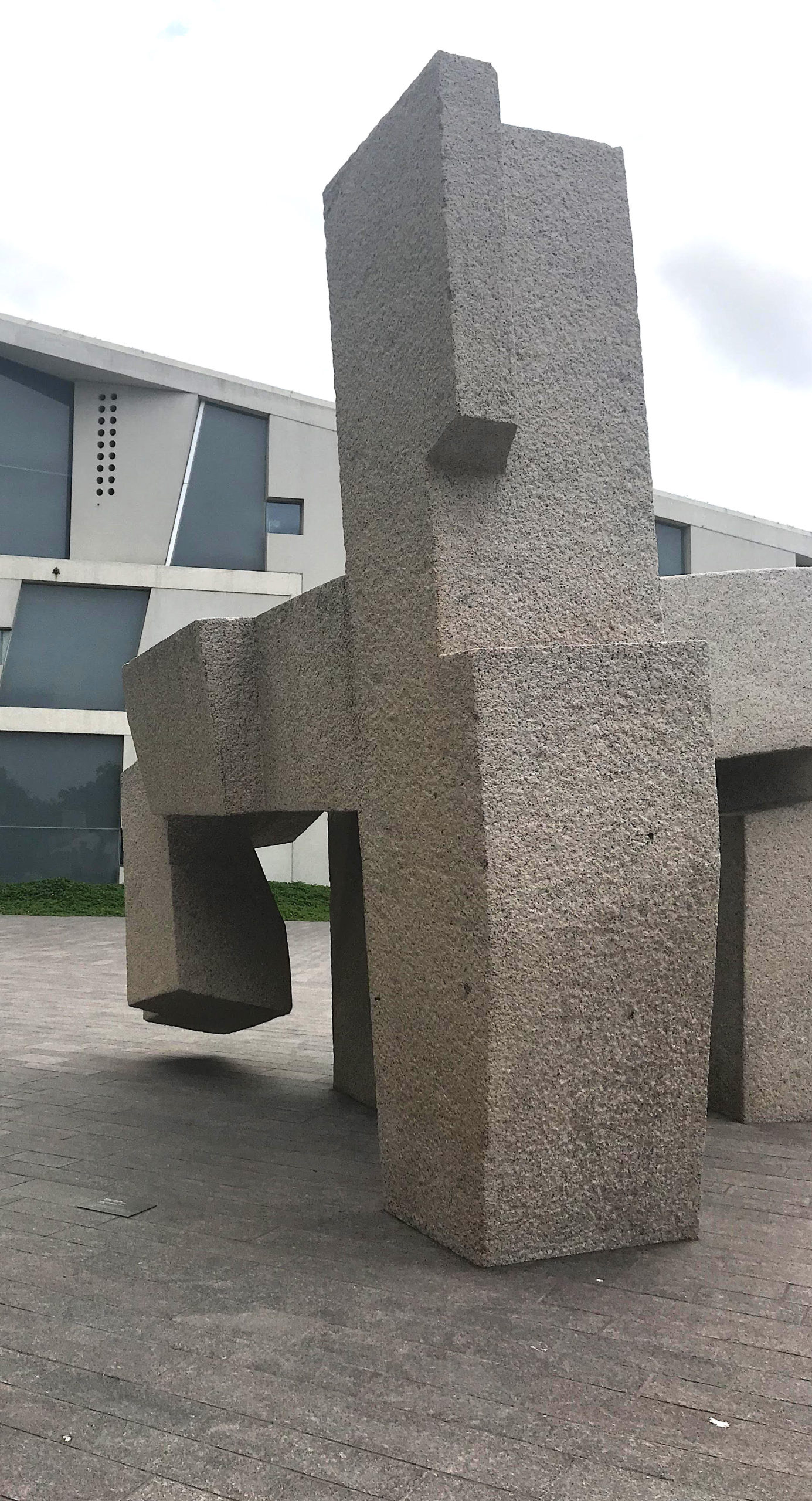
Eduardo Chillida is one of Spain’s most celebrated sculptors. Born in the Basque region, he played goalkeeper for the local soccer team as a young man.
After a career-ending knee injury he travelled to Madrid to study architecture. Although he never completed his degree, he referred to himself as an “architect of inner space.” Chillida is best known for his monumental public sculptures. His works are described by most as “abstract,” although he rejects that label, preferring to be considered a “realist.” Although his massive geometric works of steel and granite are virtually immoveable, they seem to suggest tension and movement. He considers himself as an explorer of space, yet sees “clearly that space and time are brothers.”
Believing that the mind was an artist’s most important tool, it is not surprising he incorporated philosophical ideas to inform his work. Chillida was greatly influenced by the philosopher Martin Heidegger and shared his interest in exploring humanity’s connection to space. Chillida once stated, “My whole work is a journey of discovery in space.” He believed everything was space; matter and air are both space, just with different speeds — the air being quick and matter simply slowing space down.
While many artists focus on the experience they provide an observer, Chillida preferred to focus on perception. He felt perception acted upon the present with one foot in the future while one’s experience was grounded in the past. He felt focusing on perception allowed for growth and progress.
The sculpture shown here, entitled Song of Strength, is comprised of 42 tons of granite and was completed by Chillida in 1966. It sat outside the Watkins Building of the Museum of Fine Arts in Houston for decades until it was recently moved to the L-shaped courtyard of the Glassell School building, designed by Steven Holl. Chillida’s sculpture was specifically selected along with a 30-foot-tall polished stainless steel monolith entitled Cloud Column by Anish Kapoor. Holl’s building has a sloped roof that is an extension of the plaza, forming an ampitheater at the base and extending to the top of the structure where there is a public restaurant and outlook. The landscape, designed by Deborah Nevins, along with the building and artwork form a symbiotic relationship — a magical space filled with possibilities.

it is odd how you continue to refresh my memory of Houston David….for about 5 years I lived on Rosedale about 2 or 3 blocks from the Museum of Fine Arts….I loved being that close to the bldg designed by Mies….my neighborhood was sort of an anonymous ghetto cut off by a Fed Ex facility and the freeway….I would walk mindlessly by the very sculpture you discussed today….It was on the back side of the museum and probably invisible to most people and rarely acknowledged or noticed….I remember it now in a foggy sort of way….but still grateful that you pay attention to these unique and subtle things that nuanced my own life….maybe now the sculpture has found a more appropriate location…I’m pretty sure that old neighborhood is totally gentrified by now and would no longer be recognizable to me….I need to return….it is on my bucket list
https://www.houstoniamag.com/arts-and-culture/2018/05/glassell-school-of-art-mfah-steven-holl-deborah-nevins
me again….trying to imagine how all of this fits in with the Cullen Sculpture Gargen that was designed by NOGUCHI….I’m sure they tore the old Glassel bldg down and replaced it with the bldg you describe by Holl…I strolled thru that sculpture garden frequently at one time